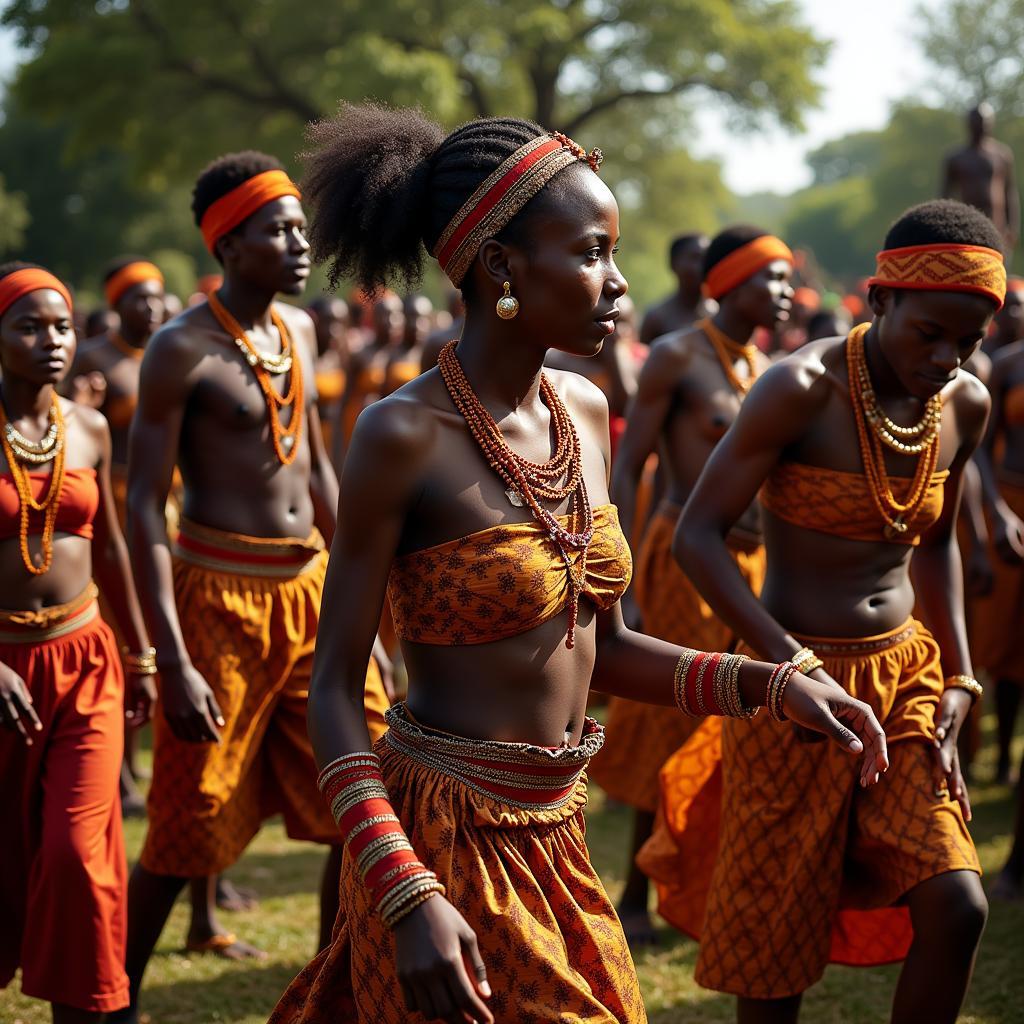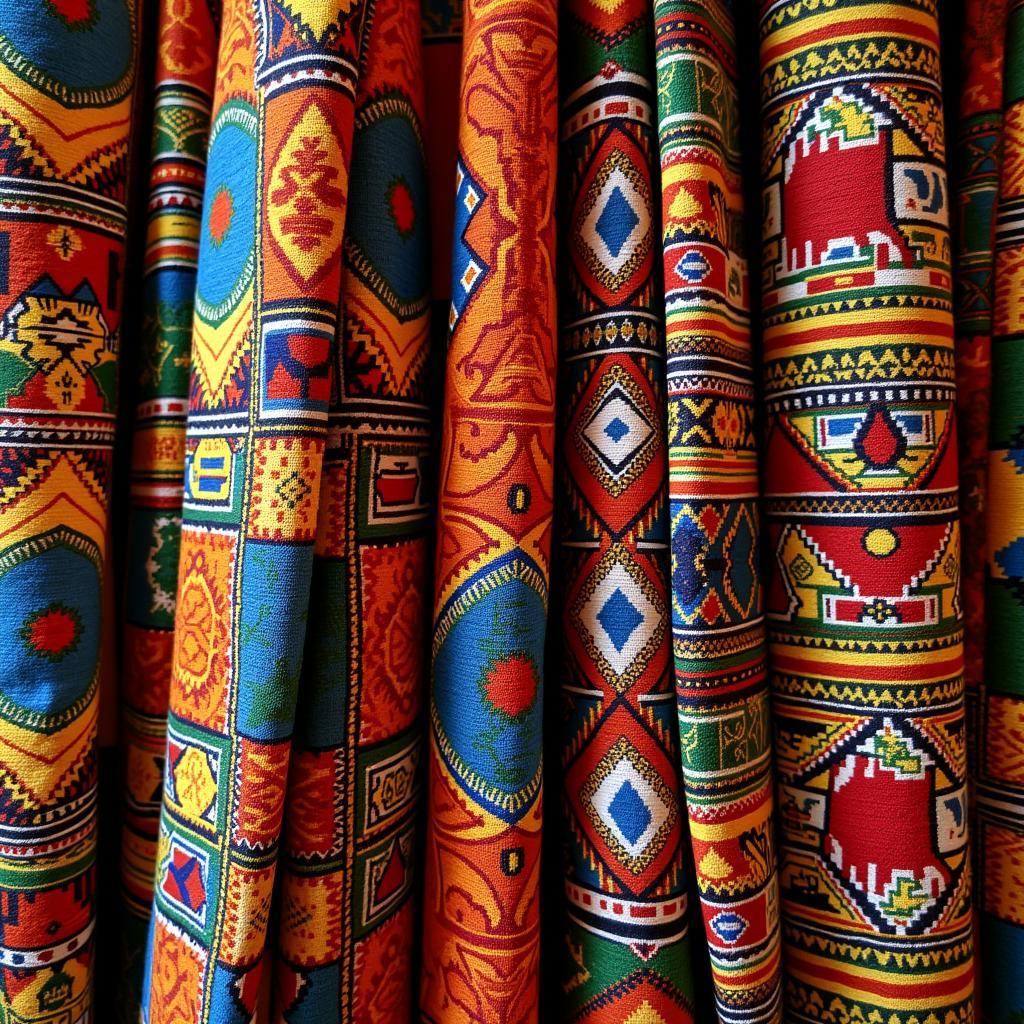The Enduring Legacy of African Diaspora Dance
African Diaspora Dance stands as a powerful testament to the resilience and creativity of the African spirit. Born from the transatlantic slave trade, it reflects the painful history of forced migration while simultaneously celebrating the enduring cultural traditions of Africa. This unique dance form has evolved over centuries, blending African aesthetics with those of the Americas and the Caribbean, creating vibrant and diverse dance styles that continue to captivate audiences worldwide.
Tracing the Roots: From Africa to the World
African diaspora dance finds its roots in the traditional dances of West Africa, particularly in regions like Ghana, Senegal, and Nigeria. These dances were, and still are, integral to social gatherings, spiritual rituals, and everyday life. When millions of Africans were forcibly displaced to the Americas and the Caribbean, they carried these dance traditions within them.
 Traditional African Dance Ritual
Traditional African Dance Ritual
The Evolution of a Dance Form
In their new environments, African dance forms were subjected to change. Under the brutal conditions of slavery, many dances became covert forms of resistance and communication. They provided a means to maintain cultural identity and offer solace in the face of oppression. Over time, these dances absorbed influences from European and indigenous cultures, leading to the development of distinct dance styles.
For example, the rhythms and movements of West African dances evolved into Samba in Brazil, Salsa in Cuba, and various other forms of social dance across Latin America and the Caribbean. Similarly, African American dance forms like tap dance and stepping trace their lineage back to these ancestral roots, demonstrating the remarkable adaptability and evolution of African dance traditions.
Celebrating Diversity: A Tapestry of Styles
The beauty of African diaspora dance lies in its incredible diversity. Each region of the diaspora has cultivated unique dance styles reflective of their specific histories and cultural blendings.
Samba: The Rhythmic Soul of Brazil
Originating in Brazil, Samba is characterized by its infectious energy, rapid footwork, and swaying hip movements. Deeply rooted in Afro-Brazilian traditions, Samba is more than just a dance; it’s a symbol of national identity and cultural pride, celebrated annually during the world-famous Carnaval.
Salsa: The Heartbeat of the Caribbean
With its origins in Cuba, Salsa is a sensual and dynamic partner dance that embodies the vibrant spirit of the Caribbean. It is a fusion of various African and European dance styles, reflecting the cultural melting pot that is Cuba. Salsa’s captivating rhythms and intricate footwork have made it a beloved dance form worldwide.
The Legacy Lives On: Modern Expressions
African diaspora dance continues to evolve and inspire, with contemporary artists drawing upon these rich traditions to create innovative and captivating works. From stage productions to street performances, African diaspora dance is a vibrant and evolving art form that transcends geographical boundaries.
Stepping: From HBCUs to the World Stage
Originating in African American fraternities and sororities at Historically Black Colleges and Universities (HBCUs), stepping combines intricate footwork, clapping, and vocalizations to create powerful percussive rhythms. This high-energy dance form is not only a visual spectacle but also a testament to the importance of community and tradition.
“African diaspora dance is a living archive of history, culture, and resilience,” says Dr. Abena Walker, a renowned dance scholar specializing in African dance traditions. “It’s a testament to the power of art to transcend time and space, connecting us to our ancestors and reminding us of the enduring strength of the human spirit.”
Conclusion: A Dance of Resilience and Joy
African diaspora dance is a vibrant tapestry woven from the threads of history, culture, and resilience. From the shores of West Africa to the Americas and beyond, these dances have preserved cultural heritage, celebrated identity, and given voice to the voiceless. As we witness the continued evolution and innovation of African diaspora dance, we are reminded of the enduring power of dance to connect us, inspire us, and remind us of the beauty and strength within our shared human experience.
